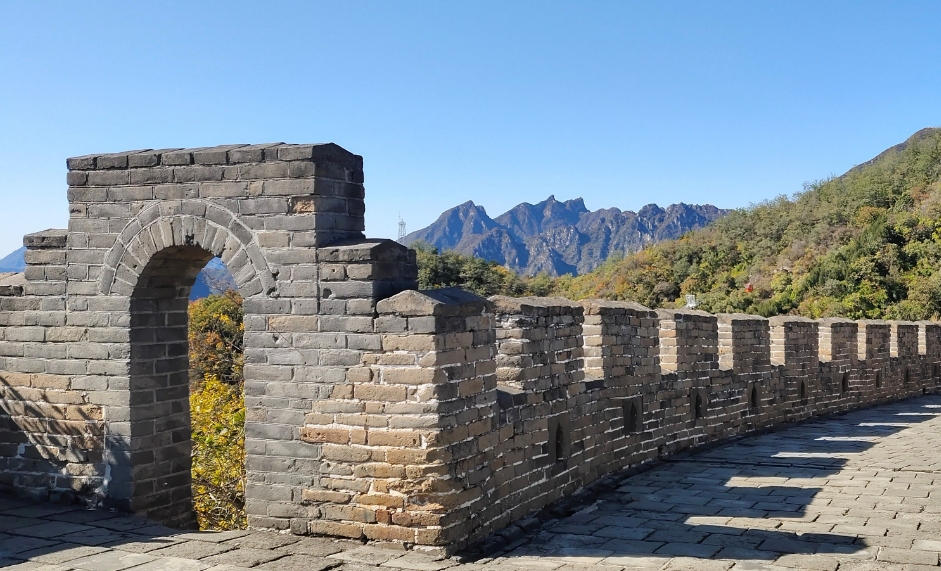
Hiking the Great Wall at Mutianyu: How Long Does it Take?
The Great Wall of China is a bucket-list destination for many, and for good reason. This awe-inspiring feat of engineering stretches for thousands of miles, offering a glimpse into China's rich history and breathtaking scenery. While exploring the entire length of the wall is an impossible task for a casual visit, hiking a section of it is an achievable and rewarding experience.
One of the most popular sections for hiking is the Mutianyu Great Wall. This well-preserved part of the wall offers a variety of routes and stunning views, making it ideal for both seasoned hikers and casual walkers. But how long does it actually take to hike the Mutianyu Great Wall?
The answer, like the Great Wall itself, is not so straightforward. It depends on a few factors:
1. Your chosen route:
- Mutianyu's Main Wall: This is the most popular option, accessible by cable car or chairlift. A leisurely stroll along this well-restored section, taking in the watchtowers and panoramic views, can take anywhere from 1.5 to 3 hours, depending on your pace and how often you stop for photos.
- The Jiankou to Mutianyu Hike: For a more adventurous and challenging experience, consider the hike from Jiankou to Mutianyu. This route takes you through a wilder, unrestored section of the wall, rewarding you with spectacular views and a sense of accomplishment. This hike typically takes about 4-6 hours to complete and requires a good level of fitness.
2. Your mode of ascent and descent:
- Cable Car/Chairlift: Opting for the cable car or chairlift to ascend and/or descend the wall will obviously shorten your overall hiking time.
- Hiking up and down: Choosing to hike both ways adds a considerable amount of time and exertion to your experience.
3. Your fitness level and pace:
- Experienced hikers: Fit individuals accustomed to hiking may complete the Mutianyu main wall section faster, while slower-paced hikers might need more time to cover the same distance.
- Families with children: Families with young children should factor in extra time for breaks and a more leisurely pace.
4. Photo stops and breaks:
- Let's be honest, the Great Wall offers countless picture-perfect moments. The more you stop to capture the beauty, the longer your hike will take.
Beyond Mutianyu: The Jiankou to Mutianyu Hike
While Mutianyu offers a fantastic Great Wall experience, some seek a more rugged and adventurous route. That's where the Jiankou to Mutianyu hike comes in. This challenging yet rewarding hike takes you through a wild, unrestored section of the wall, allowing you to experience the structure in its more raw and authentic state.
This hike typically starts with a 1-hour ascent from the village below up to the Jiankou section. From there, you'll spend about 4 hours traversing the wall, gradually transitioning from the rugged Jiankou section to the restored Mutianyu section.
Tips for Planning Your Hike:
- Check the weather forecast: Hiking the Great Wall is best enjoyed on a clear day.
- Wear comfortable shoes: Choose sturdy footwear suitable for walking on uneven surfaces.
- Bring plenty of water and snacks: Staying hydrated is crucial, especially on warm days.
- Start early: Avoid the midday heat and crowds by starting your hike early in the morning.
- Consider hiring a guide: A guide can enhance your experience with historical insights and ensure your safety on more challenging sections.
Q&A:
1. What is the best time of year to hike the Great Wall at Mutianyu?
Spring and autumn offer the most pleasant temperatures for hiking. Summers can get hot and humid, while winters can be cold and windy.
2. Is it safe to hike the Great Wall independently?
The Mutianyu section is well-maintained and generally safe for independent hiking. However, the Jiankou to Mutianyu route requires more caution and experience. Hiring a guide is recommended for this section.
3. Are there restrooms available along the Mutianyu Great Wall?
Yes, restrooms are available at the entrance, near the cable car station, and at various points along the restored section of the wall.
note: This return of all, without the author's permission, may not be reproduced